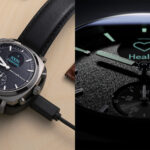Battery technology has become a pivotal aspect of modern watch design, especially with the rise of smartwatches and advanced features in traditional timepieces. As consumer expectations for performance and convenience increase, manufacturers are focusing on extending battery life and enhancing charging methods. Here’s a look at the latest trends and advancements in battery technology for watches.
1. Extended Battery Life
The demand for longer battery life has led to significant innovations:
- Low-Power Components: Advances in microprocessor technology and low-power sensors allow watches to perform complex functions while consuming minimal energy. This is particularly important for smartwatches that track health metrics continuously.
- Energy Harvesting: Some watches incorporate energy-harvesting technologies, such as solar cells or kinetic energy systems, which convert light or movement into power, extending battery life significantly.
- Optimized Software: Manufacturers are developing more efficient operating systems and algorithms that manage power consumption effectively, ensuring that essential functions remain active while conserving energy.
2. Fast Charging Solutions
With busy lifestyles, consumers increasingly value quick charging capabilities:
- Rapid Charging Technologies: Innovations in charging technology enable watches to recharge quickly, providing several hours of use from just a short charging session. This is crucial for users who need to power up before heading out.
- Wireless Charging: Many modern watches now feature wireless charging, simplifying the charging process and eliminating the hassle of dealing with cables. This technology is often designed to be both efficient and convenient.
3. Battery Types and Materials
The evolution of battery chemistry is enhancing performance:
- Lithium-Ion Batteries: These batteries are commonly used in smartwatches due to their high energy density and relatively lightweight. They can support a variety of features without significantly increasing the watch’s bulk.
- Solid-State Batteries: Emerging solid-state battery technology promises even greater energy density and safety compared to traditional lithium-ion batteries. They are expected to revolutionize wearable technology by providing longer-lasting power with reduced risk of leakage or fire.
4. User-Friendly Features
Manufacturers are also focusing on features that enhance user experience:
- Battery Health Monitoring: Many smartwatches now include software that allows users to monitor battery health and optimize settings to prolong lifespan, making it easier to manage power usage.
- Power Saving Modes: Watches can automatically switch to power-saving modes during inactivity or when battery levels are low, extending usability without compromising essential functions.
5. Sustainability Considerations
As environmental concerns rise, the watch industry is increasingly focusing on sustainable battery technology:
- Recyclable Materials: Some manufacturers are exploring the use of recyclable materials in battery production, aiming to minimize environmental impact and promote sustainability.
- Longer Lifespan: By developing batteries that last longer and perform better, brands reduce the need for frequent replacements, aligning with eco-friendly practices.
Conclusion
Battery technology is crucial in shaping the future of watches, particularly as they incorporate more features and functionalities. The shift towards longer battery lifespans and fast charging solutions enhances user experience, making watches more convenient and reliable. As technology continues to evolve, we can expect even more innovations in battery technology, allowing watches to meet the demands of modern life while also addressing sustainability concerns. This ongoing evolution will ensure that watches remain not only timeless accessories but also cutting-edge technological devices.



